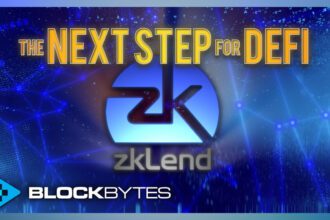What is Bitcoin?
Bitcoin is a digital form of money
Unlike the most common forms of money circulating within our world economy, Bitcoin is not a singular country’s main currency nor a currency system controlled by a central bank (or any single entity for that matter). Bitcoin is composed of a decentralized and trustless verification system, which verifies transactions on the Bitcoin ledger.
Before we go any further, let’s define some of the key terms we just mentioned:
Money
- Money is an intangible system of value that facilitates the exchange of goods in an economy
- Money should have the following 3 characteristics:
- Medium of exchange
- Unit of account
- Store of value
Currency
- Currency is a tangible form of money, which is an intangible system of value.
- Currency is a generally accepted form of payment usually issued by a government in the form of coinage, paper, or credit and circulated within its jurisdiction.
Ledger
- A record-keeping system that holds financial data.
- Transactions made within a currency system are summarized and made into journal entries
Decentralization & Trustlessness
- Decentralization is the process by which the activities of an organization, particularly those regarding planning and decision making, are distributed or delegated away from a central, authoritative location or group.
- Trustlessness, by way of decentralization and other characteristics true to blockchain technology, means the need for trust in third parties is eliminated.
What does Bitcoin do?
Because of its decentralized and trustless nature, Bitcoin can be sent anywhere in the world, across borders and jurisdictions. In our digital age, sending traditional forms of cash to other countries has to be done with the aid and blessing of governing financial institutions, which presupposes an inherent level of trust, ultimately forfeited by the individual.
Banks own the digital dollars in your bank account; they own your debt. Bitcoin is the closest thing to “money-stashed-under-the-mattress” in this post-analogous world. Except with Bitcoin, your mattress has an ultra-secure wormhole that can send your money from the United States to Siberia in minutes.
How does Bitcoin work? (Explained to a really smart golden retriever)
Bitcoin is a ledger. The history of transactions on its ledger is the currency, in and of itself.
A ledger is a tool used to facilitate transactions by tabulating IOUs and payments to avoid exchanging dollars every time a transaction occurs. At the end of each period, users participating within this currency system would theoretically settle up accounts.
To avoid any single entity or person manipulating transactions by either adding false lines to the ledger or by overspending, the Bitcoin protocol uses a combination of individually generated pairs of public and private keys to verify transactions.
Additionally, instead of one communal ledger, the protocol is set up so that every user possesses their own version of the ledger. To ensure everyone has the same messages entered onto their ledger, every time a new transaction is made, it is broadcasted to all the other users’ ledgers.
The protocol uses cryptographic hash functions to make sure those transactions are valid. These functions are enabled by computational work and require real-life energy to prove the mathematical equations needed to validate the broadcast. This computational work can then prove that the broadcast sent to every one’s ledgers is indeed correct and valid. This concept is commonly referred to as “proof-of-work”. The people doing this computational work are referred to as miners.
To process these broadcasts more efficiently, the miners perform computational work for a cluster of broadcasts, known as blocks. The miner with the most amount of energy and computational power then gets to validate the block in question and receives a block reward in the form of bitcoins.
To avoid someone altering the blocks of broadcasts in the future the computational work needed to create a block needs to contain information about the previous block. This creates a daisy chain, where each subsequent block contains information about its predecessor within the chain. That is why instead of calling Bitcoin a ledger, we call it a blockchain.














